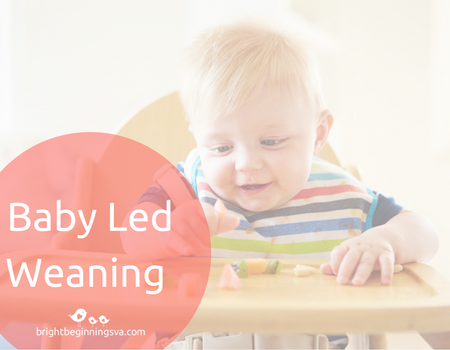Tips and Tricks for Baby Led Weaning
Tips and Tricks for Baby Led Weaning

When I heard the term, “Baby Led Weaning,” I always associated it with solely weaning a baby off their breastmilk or formula. But, baby led weaning is all about getting your little one to self-feed. Instead of introducing purees, a baby gets introduced to solid finger foods; virtually leaving no use for a spoon. Read on to learn about some research that supports this movement, and gain some helpful tips and tricks if you wish to embrace this practice.
Initially, Gill Rapley and Tracey Murkett wrote a book called Baby-Led Weaning: The Essential Guide to Introducing Solid Foods. Today, the team has many more books that focus on this strategy (including a cookbook!). In it, they focus on various strategies and tactics that are easy for you to try in your own home. They include:
- Encouraging babies to eat with the family at every meal.
- Let babies self-feed finger foods (that don’t pose a choking hazard.)
- Allow a child to choose what, how much, and how fast they eat their food.
- Explore textures and tastes in a non-threatening/pressured way.
- Offer milk (via breast or bottle) in addition to the solid foods (which will decrease closer to age one.)
- Start with appropriate foods like banana, sweet potatoes, green beans (skin removed), cooked apples, avocado and cooked carrots
So, what are the overall benefits of baby led weaning? The duo feels that this early introduction to solids increases a baby’s chance of accepting various foods later on. Self-regulation is also learned early on, so this may decrease your child’s chance of having a high body mass index. They learn to stop eating when they feel full. It’s also a time saver. Mashing foods up and making purees can take some time and effort. Plus, your little one feeds them self, so you’re not tied to the table holding a spoon to their mouth. And, each time your baby pinches or grasps food, they are honing in on improving their fine motor skills, and increasing their hand/eye coordination as they raise the food to their mouth.
Sounds pretty great, right? To get started in your own home, look for signs of readiness. They include:
- Being able to sit upright without support.
- Shows interest in food and mealtime.
- Can pick up small pieces of food.
- Keeps food in their mouth.
- Attempts to chew and mash with their mouth.
Baby led weaning is pretty awesome and you don’t need a lot of things to get started. Provide a safe space, healthy (appropriate) finger foods, and some positivity and patience. You’ll notice that your baby will begin to make choices and will benefit emotionally, physically, and socially from this food venture.




